The World Health Organization (WHO) has recommended six months of exclusive breastfeeding for infants for their optimized growth and development. After 6 months nutritious complementary feeds should be added to breast milk for 2 years.
Breastfeeding has an array of health benefits for the baby, hence, breastfeeding must be encouraged. However, insufficient breast milk production is a common problem all around the globe and unawareness about it is a greater issue. Therefore, it is important for the new mothers to know about natural galactagogues.
Galactogogues are plants or foods that initiate, induce and maintain milk production. Mothers must consume foods that improve the quality as well as the quantity of the breast milk.
How to Increase Milk Production
Let’s have a look at the natural super foods that improve the production of breast milk in mothers:
Fenugreek (Methi)
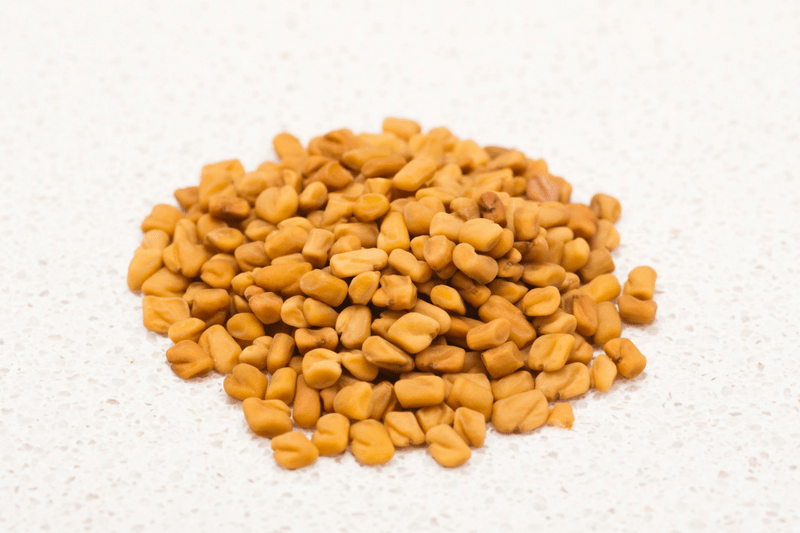
Fenugreek
Fenugreek is a galactagogue that has been used around the world from the olden times. Compounds present in fenugreek seeds that enhance breast milk production are:
- Trigonelline
- Choline
- Prolamin
- Sapogenin
- Alkaloid
- Mucilage fibers
Diosgenin and yamogenin are two types of sapogenin present in fenugreek seeds that have estrogenic properties. Studies have found that the breast glands are improved sweat glands and fenugreek increases the production of breast milk through the increase of sweat production.
Moreover, diosgenin possesses phytoestrogenic property, plant chemicals that mimic the action of estrogen. Research-based studies have found that breast milk production was more in mothers who consumed fenugreek as compared to mothers who did not consume fenugreek.
To boost the production of breast milk:
- Swallow fenugreek seeds with water.
- Chew few soaked fenugreek seeds.
- Eat fenugreek leaves.
- Have a cup of home-made fenugreek seed tea.
Black Seeds (Nigella Seeds)
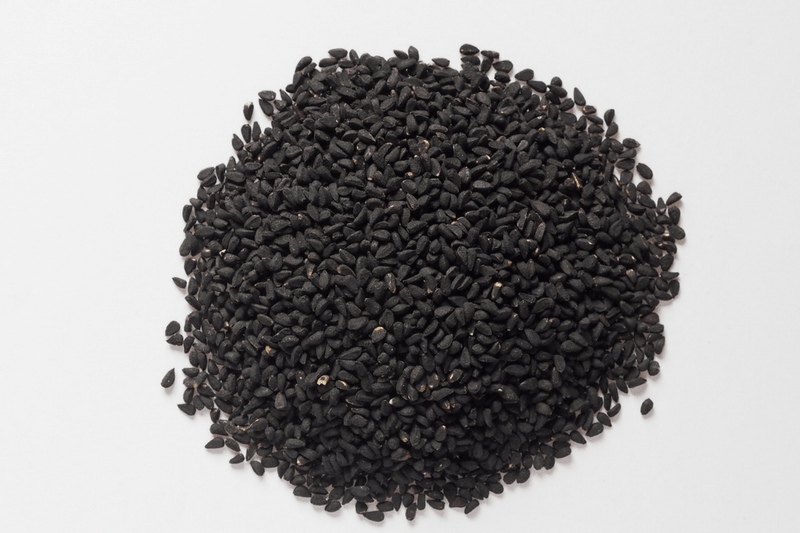
Black Seeds
Black Seeds or Nigella Seeds also known as Kalonji are used as a galactagogue in the traditional medicine. These seeds possess a prolactin stimulatory effect, which enables the mothers to produce breast milk. Such a stimulatory effect of the seeds is attributed to the presence of anethole, a chemical compound in it.
Nigella Seeds also contain high amounts of nutrients and health-promoting compounds that participate in their galactagogue effect, these include:
- Carbohydrates
- Proteins and amino acids
- Unsaturated fatty acids
- Quinones: thymoquinone, nigellone, thymohydroquinone
- Alkaloids
- Terpenoid
- Carvacrol
Consume Nigella seeds in the following ways to enhance breast milk production:
- Eat 1 teaspoon plain seeds.
- Eat 1 teaspoon seeds mixed with honey.
- Swallow the seeds with water or milk.
- Add it to the chapati/bread dough while making.
Fennel Seeds
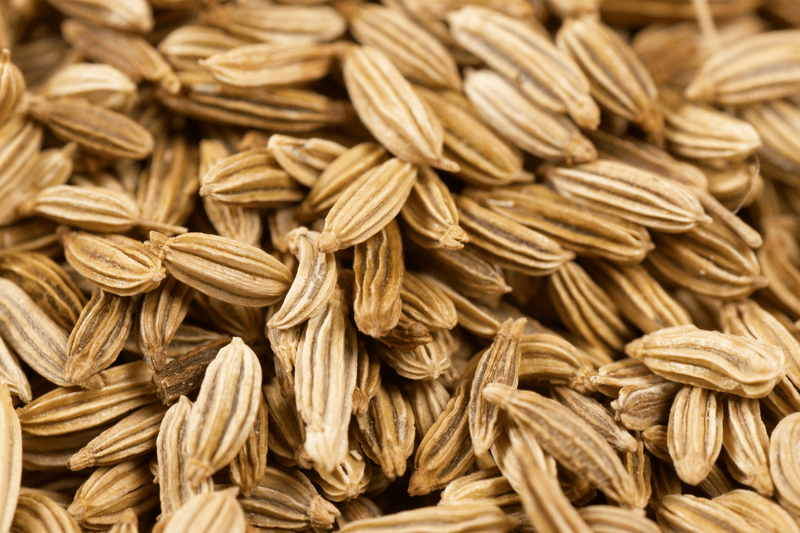
Fennel Seeds
Fennel is a herb with galactagogue property. One study found that herbal tea containing fennel seeds improved the signs of breast milk sufficiency and infant’s growth parameters. Furthermore, fennel has the phyto-estrogenic property that causes breast growth and milk production.
Another study found that mothers who consumed fennel seed powder for 3 months had increased prolactin levels in the blood. Prolactin enables the females to produce milk, thus an increase in the blood level of prolactin improves breast milk production in lactating mothers.
Dopamine is a neurotransmitter that binds to prolactin, changes its composition and makes it ineffective in milk production. Anethole is a chemical compound present in fennel seeds that has a structure similar to dopamine. Thus, it competes with dopamine and binds with prolactin first. Hence, it helps in preserving the milk stimulation properties.
How to consume fennel to enhance breast milk production:
- Eat 1-2 teaspoons raw fennel seeds.
- Make fennel tea by boiling fennel seeds in water for 3-5 minutes. Strain this tea and add honey to it.
- Fennel seeds can even be added to curries, soups and gravies.
- You can add fennel seed powder along with some nuts to a cup of warm milk.
Note: Fennel capsules are available in the market, but it is recommended that breastfeeding mothers consume fennel seeds or leaves in the fresh and natural form.
Milk Thistle
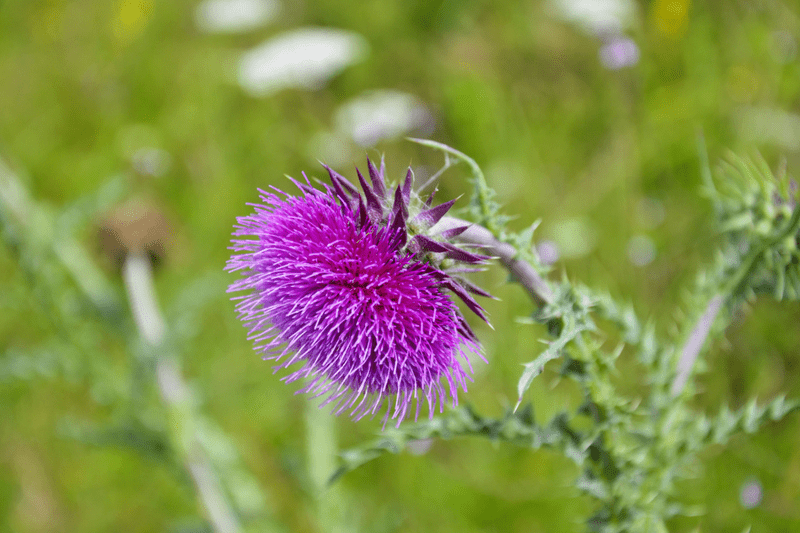
Milk Thistle
Milk thistle is a flowering herb that increases the production of breast milk in lactating mothers. It is an age-old remedy that has been used by women since ancient times.
One small study found that milk thistle stimulates the production of breast milk in lactating mothers.
Furthermore, it is safe to use and no side-effects of milk thistle were observed.
How to consume milk thistle:
- Boil 1-2 teaspoons of milk thistle seed powder with 1.5 cups of water for 5-7 minutes.
- Strain the tea and consume it 2-3 times in a day.
Goat’s Rue
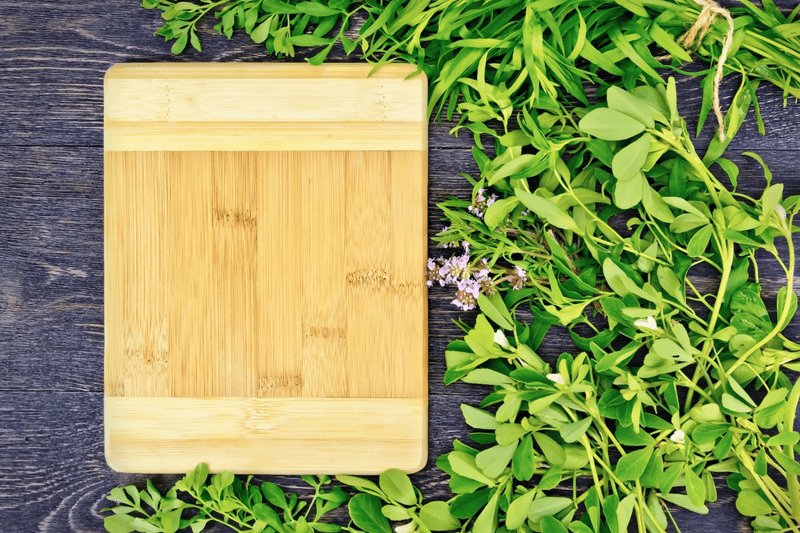
Goat’s Rue
Goat’s rue is a herb with potent lactogenic effect. Dried leaves of this plant stimulate the production of breast milk and boost the growth of breast tissue.
Goat’s rue is a good source of phytoestrogens, plant chemicals that mimic the action of estrogen in the body. Estrogen increases the concentration of prolactin receptors. Prolactin is a hormone responsible for milk secretion in females during the lactation.
Intake of natural phytoestrogen food sources promotes the estrogenic receptors and increases the milk production. Phytoestrogens present in goat’s rue include:
- Flavonol
- Triglycosides
- Kaempferol
- Quercetin
Note: Goat’s rue fresh leaves can be toxic. Therefore, one should always use the dried leaves. Besides this, goat’s rue is an effective hypoglycemic agent. Therefore, females with hypoglycemia should avoid taking it.
How can you consume goat’s rue:
- Boil 1 teaspoon dried leaves in 1 cup water for 5-7 minutes. You can consume this tea 2-3 times in a day. The lactogenic effect of goat’s rue is further improved when it is combined with fenugreek seeds.
Shatavari (Asparagus Root)
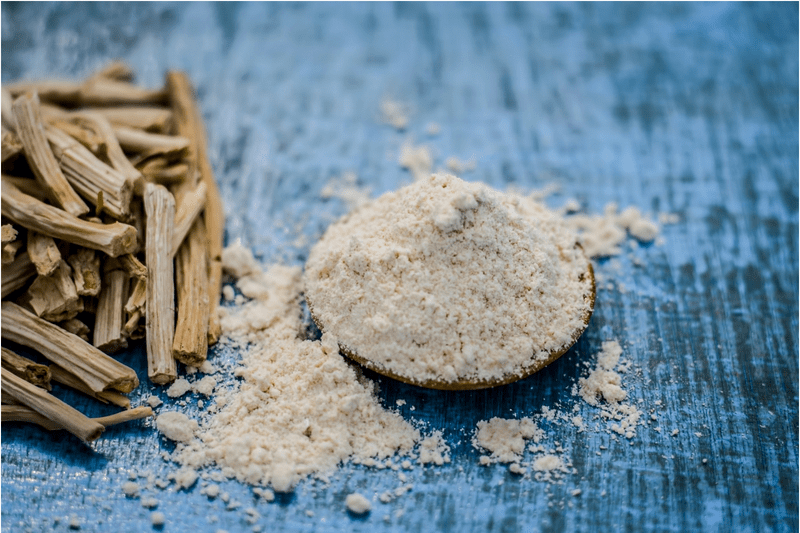
Asparagus Root (Shatavari Powder)
Shatavari has been mentioned as a galactagogue in the Ayurvedic literature and has been confirmed through experiments as well. Its role as a milk enhancing agent has been mentioned in many ancient Ayurvedic textbooks.
One study found that intake of shatavari increased the prolactin hormone level in breastfeeding mothers. Such an increase improved the production of breast milk.
This lactogenic effect of shatavari is attributed to the presence of saponins in it. Furthermore, no toxic effects of shatavari on the health of the mother and the baby were observed during the study.
How to consume shatavari:
- Consume 3-6 grams of shatavari powder with warm milk twice a day, that is, in the morning and in the evening.
Papaya Leaves
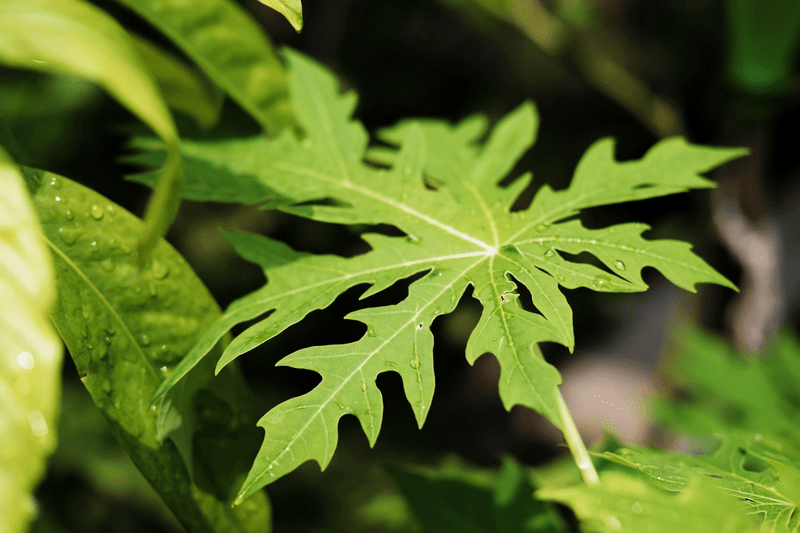
Papaya Leaves
Papaya leaf is a natural galactagogue. Consumption of papaya leaves by mothers increases the production of breast milk as well as improves its taste. It further boosts the nutrient composition of breast milk and makes it more nourishing.
The presence of phytochemicals in papaya leaves is responsible for its lactogenic effect. These phytochemicals include:
- Sesamin
- Limonin
- Trifoliol
- Quercetin
- Kaempferol
These phytochemicals activate the prolactin receptor, which in turn increases the production of breast milk.
Besides this, consumption of papaya puree improves the vitamin A content of the breast milk.
How to consume papaya during lactation:
- You can have plain, raw papaya leaf.
- One can even drink papaya leaf juice. Make sure the papaya leaves are not too old or not too young.
Red Ginger

Red Ginger
Nursing mothers who experience low milk production can depend on red ginger to improve their breast milk production. One interesting study found that intake of ginger drinks can increase the breast milk production and reduce flatulence in mothers after undergoing a cesarean delivery.
The lactogenic activity of red ginger is attributed to the presence of certain compounds in it, like:
- Shogaol
- Gingerol
- Gingerone
How to incorporate ginger in the diet:
- Add it to a cup of tea or to curries and gravies.
- Make a cup of ginger tea by boiling ginger slices with 1 cup of water for 2-3 minutes.
Whole Grains
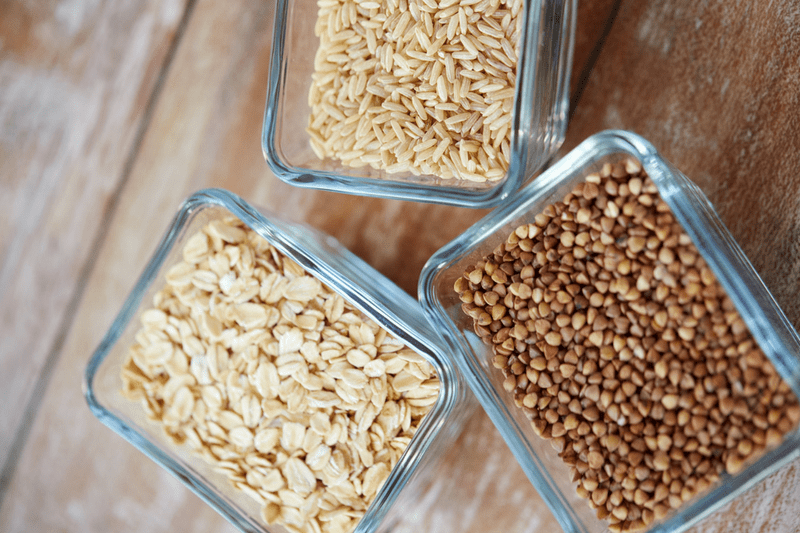
Whole Grains
Whole grains are nutritious and a healthy foods to increase breast milk. They help in maintaining a hormonal balance and activate the prolactin receptors, a hormone that enhances the production of milk.
Besides this, whole grains are a great source of carbohydrates, dietary fiber, potassium, magnesium, iron and some B-complex vitamins that help in providing energy to the breastfeeding mothers. Healthy whole grain options include:
- Oats
- Barley
- Millets
- Brown rice
- Quinoa
- Broken Wheat
Among all whole grains, women have experienced that oatmeal increases the milk supply in breastfeeding mothers. Adding nuts and oilseeds to your bowl of oatmeal further enhances its lactogenic effect. However, this is just a word-of-mouth recommendation and there are no scientific studies to prove it.
Lactating mothers should consume 6-7 servings of whole grain cereals per day, along with pulses, vegetables and dairy products.
Note: All the above mentioned natural foods are wholesome, nutritious and safe for breastfeeding mothers. However, mothers with low breast milk supply must consult their doctor and a Registered Dietician to know more about oral galactagogues and lactogenic foods.
Breast milk is important for the baby and mothers must pay special attention towards the quality and quantity of their breast milk. Hence, eating healthy and following a wholesome diet is important for a breastfeeding mother.
References
- Vida Ghasemi, Masoomeh Kheirkhah, The Effect of Herbal Tea Containing Fenugreek Seed on the Signs of Breast Milk Sufficiency in Iranian Girl Infants, Iranian Red Crescent Medical Journal, Volume 8, 2015 (https://www.ncbi.nlm.nih.gov/pmc/articles/PMC4585338/)
- Profesor Ali Esmail Al-Snafi and Assist professor Wajdy J Majid, Galactagogue action of Nigella sativa seeds, Journal of Pharmacy, Volume 4, Issue 6, 2014 (https://www.researchgate.net/profile/Ali_Al-Snafi/publication/313663324)
- Hossein Hosseinzadeh, Mohsen Tafaghodi, Effect of Aqueous and Ethanolic Extracts of Nigella sativa Seeds on Milk Production in Rats, Journal of Acupuncture and Meridian Studies, Volume 6, Issue 1, 2013 (https://www.sciencedirect.com/science/article/pii/S2005290112001239)
- Chiara Peila, Alessandra Coscia, Paola Tonetto, Evaluation of the Galactogogue Effect of Silymarin on Mothers of Preterm Newborns (<32 weeks), La Pediatria Medica e Chirurgica: Medical and Surgical Pediatrics, 2015 (http://www.pediatrmedchir.org/index.php/pmc/article/view/pmc.2015.105/121)
- Tin Fei Sim, Jillian Sherriff, Lisa B. G. Tee, The Use, Perceived Effectiveness and Safety of Herbal Galactagogues During Breastfeeding: A Qualitative Study, International Journal of Environmental Research and Public Health, Volume 9, 2015 (https://www.ncbi.nlm.nih.gov/pmc/articles/PMC4586661/)
- Alessandra N Bazzano, Rebecca Hofer, Shelley Thibeau, A Review of Herbal and Pharmaceutical Galactagogues for Breast-Feeding, The Ochsner Journal, Volume 4, 2016 (https://www.ncbi.nlm.nih.gov/pmc/articles/PMC5158159/)
- Mradu Gupta, Badri Shaw, A Double-Blind Randomized Clinical Trial for Evaluation of Galactogogue Activity of Asparagus Racemosus Wild, Iranian Journal of Pharmaceutical Research, Volume 1, 2011 (https://www.ncbi.nlm.nih.gov/pmc/articles/PMC3869575/)
- Filia Startia Setyono, Annis Catur Adi, Galactogogue Instant Powder Combination of Papaya Leaves and Red Ginger for Breastfeeding Mother, International Journal of Preventive and Public Health Sciences, Volume 2, Issue 4, 2016 (http://cdn.ijpphs.com/Upload/Vol2Issue4/IJPPHS_2(4)_07_OA.pdf)

